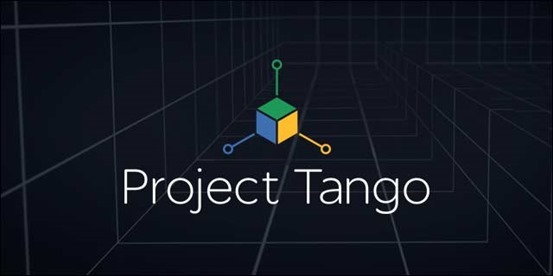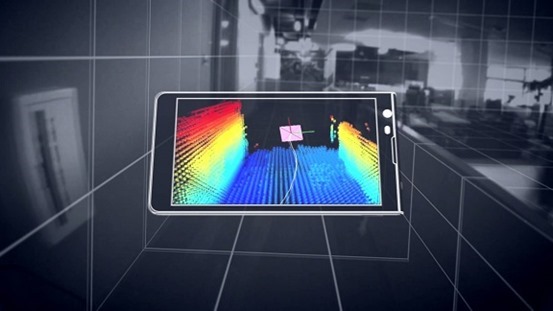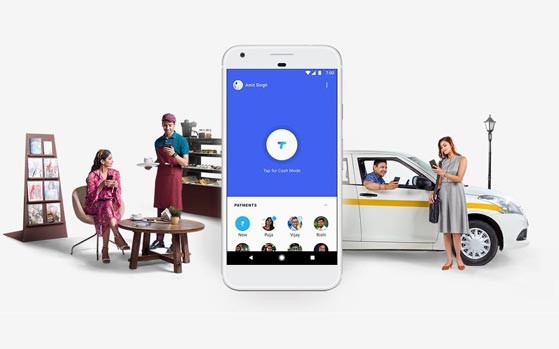 Project Tango is an attempt by Google to create a mobile device that understands and perceives the world the same way as we do and that shares our sense of space and movement. It is an Android-based prototype 5” phone and developer kit with advanced 3D sensors out of its Advanced Technology and Projects (ATAP) hardware skunk works group. Using its sensors, the phone tracks motion. It can actually build a visual map of rooms using 3D scanning. Google is quite ambitious about this discovery and hopes the combination of these sensors with advanced computer vision techniques will open new windows for indoor navigation, immersive gaming and many more such things.
Project Tango is an attempt by Google to create a mobile device that understands and perceives the world the same way as we do and that shares our sense of space and movement. It is an Android-based prototype 5” phone and developer kit with advanced 3D sensors out of its Advanced Technology and Projects (ATAP) hardware skunk works group. Using its sensors, the phone tracks motion. It can actually build a visual map of rooms using 3D scanning. Google is quite ambitious about this discovery and hopes the combination of these sensors with advanced computer vision techniques will open new windows for indoor navigation, immersive gaming and many more such things.
With Project Tango Google wants to see what kinds of applications developers will dream of for this technology. It will unfold new kinds of smart, vision-based applications based on the 3D sensing and vision technology that is available in the phone. Human beings will be able to create applications that were so far impossible. These phones have a compass and gyros like other phones. Besides that they appear to be Kinect-like visual sensors that can scan the room around the phone. It is also possible to locate where exactly the phone is in space.
Google uses Movidius Myriad 1 vision processor platform for Project Tango. These sensors were incredibly expensive in the past, they drain the phone’s batteries fast since they are computationally demanding. The latest vision processors use less power and hence Google was able to come up with this project. The ambitious Project Tango is heading to the International Space Station. Two of the Tango phones which would be launched in May 2014 would take supplies to the International Space Station. The phones will be used as part of a NASA project that is developing robots that could one day fly around the inside or outside of the space station, or be used in NASA’s planned mission to land on an asteroid.
These phones have several cameras and infrared range-finding which helps the phone build a three dimensional model of its surroundings. This is the major difference Tango phones have from the other phones which can see only a two dimensional world through a single camera. Tango pulls together a few companies which work on cutting-edge technology. It includes a low-powered, vision-processing chip called the Myriad 1 with custom-designed architecture by Movidius. The Myriad 1 is able to power the complex algorithms needed for computer vision without draining the smart phone’s battery. The current smart phone chips cannot do it.
Google is soon putting Tango in the hands of developers starting with 200 devices. Tango, indeed, has the potential to change many of our lives. This combination of hardware and software would be highly beneficial to vision-impaired human beings. It could also change the state of indoor 3D modeling. Tango video is able to paint the real world in a rainbow-colored 3D map in real time. Tango is a research project which is just launched and there is no clear indication of what the invited developers will do with these sensors. There are many upcoming opportunities and career prospects which would be made use of with this technology. For example, if someone creates a wearable holder that puts Tango on your chest and points out its sensors, it could alert you to danger ahead. It would see an oncoming car or out-of-control bicyclist in front of you and it would vibrate to warn you.
Google has obtained a lot of coverage by putting the sensor technology in what people recognize- that is, a phone. There are more opportunities which can be developed out of this technology for which people have to spend more time staring at the screen. Tango is precisely a research project this way.
Author Bio:
I Harvey, from past years I am really concerted on writing help for students with buy legit essays online with good online support. My experience and expertise have indeed lent a hand for me to write academic coursework such



